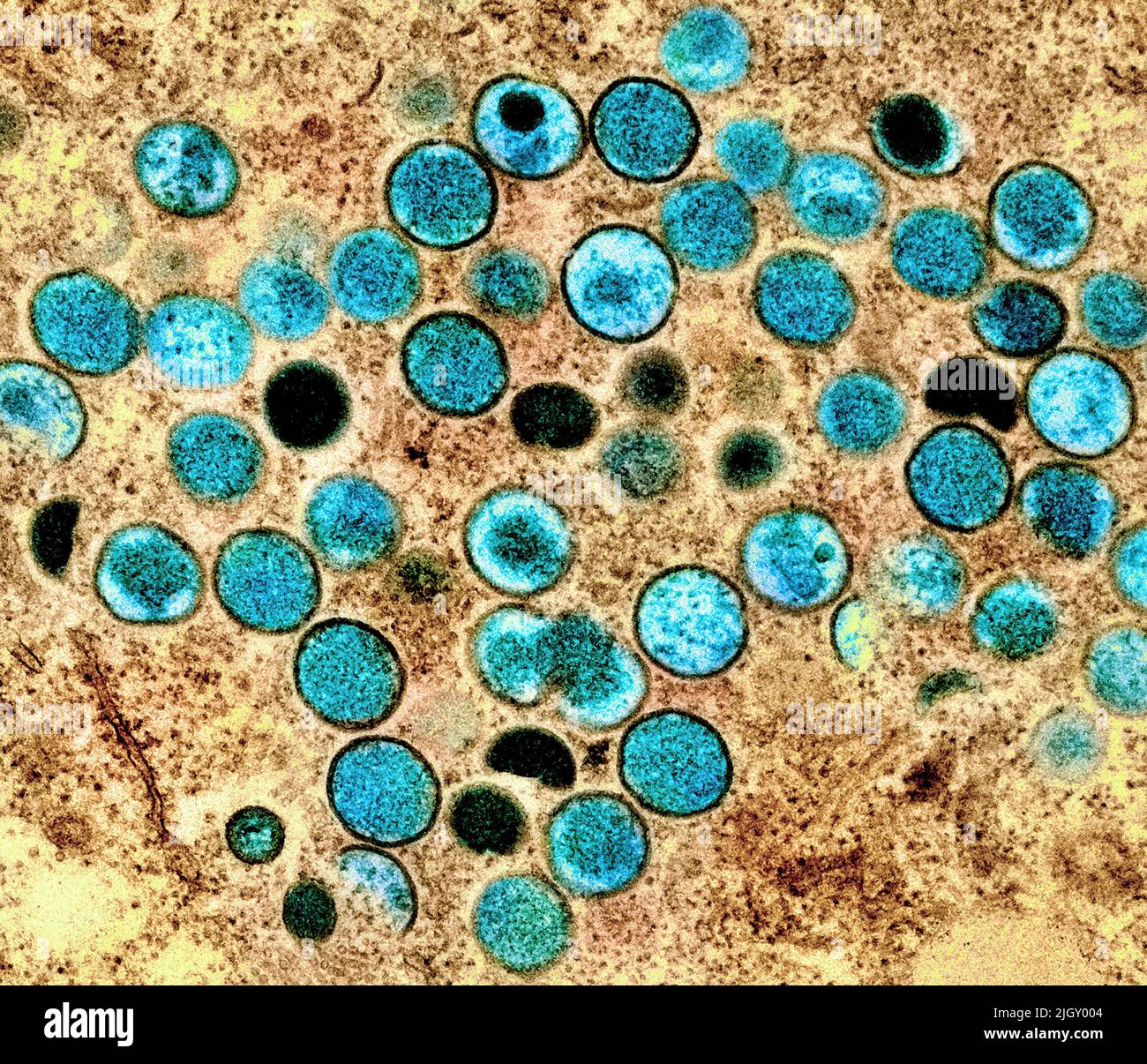Monkeypox. Colorized transmission electron micrograph of mature extracellular Nipah Virus particles (red) near the periphery of an infected VERO cell (blue and green). Image captured at the NIAID Integrated Research Facility in Fort Detrick, Maryland. Credit NIAID Monkeypox is an infectious viral disease that can occur in humans and some other animals.Symptoms include fever, swollen lymph nodes, and a rash that forms blisters and then crusts over. The time from exposure to onset of symptoms ranges from 5 to 21 days. The duration of symptoms is typically 2 to 4 weeks.

Image details
Contributor:
American Photo Archive / Alamy Stock PhotoImage ID:
2JGY004File size:
43.4 MB (4.2 MB Compressed download)Releases:
Model - no | Property - noDo I need a release?Dimensions:
4200 x 3608 px | 35.6 x 30.5 cm | 14 x 12 inches | 300dpiDate taken:
13 July 2022Location:
Maryland, USMore information:
This image could have imperfections as it’s either historical or reportage.
Monkeypox is an infectious viral disease that can occur in humans and some other animals.Symptoms include fever, swollen lymph nodes, and a rash that forms blisters and then crusts over. The time from exposure to onset of symptoms ranges from 5 to 21 days. The duration of symptoms is typically 2 to 4 weeks.There may be mild symptoms, but it may occur without any symptoms being known. The classic presentation of fever and muscle pains, followed by swollen glands, with lesions all at the same stage, has not been found to be common to all outbreaks. Cases may be severe, especially in children, pregnant women or people with suppressed immune systems. The disease is caused by monkeypox virus, a zoonotic virus in the genus Orthopoxvirus. The variola virus, the causative agent of smallpox, was also in this genus.[2] Of the two types in humans, the West African type causes a less severe disease than the Central African (Congo Basin) type. It may spread from infected animals by handling infected meat or via bites or scratches. Human to human transmission can occur through exposure to infected body fluids, contaminated objects, by small droplets and possibly the airborne route. People can spread the virus from the onset of symptoms until all the lesions have scabbed and fallen off; with some evidence of spread for more than a week after lesions have crusted.Diagnosis can be confirmed by testing a lesion for the virus's DNA. There is no known cure. A study in 1988 found that the smallpox vaccine was around 85% protective in preventing infection in close contacts and in lessening the severity of the disease. A newer smallpox and monkeypox vaccine based on modified vaccinia Ankara has been approved, but with limited availability.Other measures include regular hand washing and avoiding sick people and other animals.